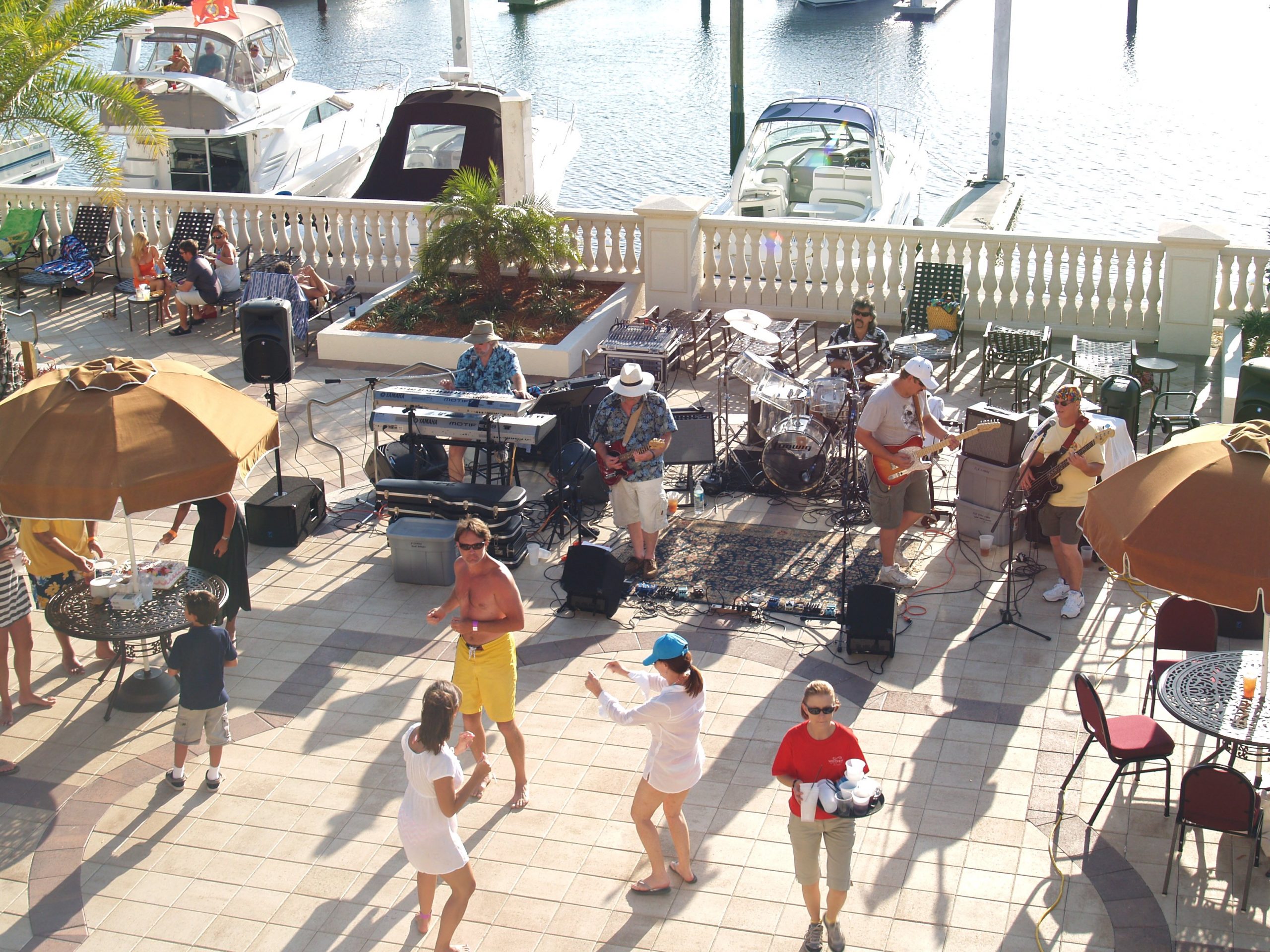
What Do Your Customers Think are the Most Important Reasons for Being at Your Facility?
Published on June 24, 2021Do you really know your customers? Most marina owners and managers would say yes. In part they may be right. But really getting to understand what your customers are thinking and why customers come to your facility as opposed to others takes some effort, and it’s not always an effort that gets the full attention it deserves.
There are, of course, many reasons why customers choose to come to your facility, or, conversely, choose not to, or to leave for another facility. There may be many similarities as well as numerous differences. The key is really to understand all of them and decide which ones are important and how to better achieve them (for the positives), or avoid them (for the negatives). Equally important is to consider them in relation to your vision for the marina and business model.
The effort starts with taking time to really talk with your customers, and mostly just letting the conversation flow. You might be surprised as to what you learn, not only by what they say, but how they say it – as well as what they don’t say!

Talk to the Customers
I make it a point when visiting clients’ facilities (and sometimes non-client facilities) to walk the docks in boating attire and talk to the customers. Most are willing to talk about the facility – what they like, dislike, would do differently, etc. While some folks may be a little shy at the beginning, most are willing to share with a little prodding. And while the ranking order often varies, I have found a fair number of similarities, whether talking with customers at facilities close to home or in some of the most far flung marinas in the boating world.
Location, location, location is most always at or near the top of the list. Is it convenient to get to? Is it in a safe area? Does one feel comfortable getting to and being there? Does it give me access to the boating waters where I want to be?
Once at the facility – is it a safe harbor and protected from the elements? Are there adequate water depths at all tidal or water elevations? Is there meaningful security? Are the utilities adequate?
Is the facility attractive? What are the restrooms like?
Boat maintenance and repair services. Is there someone available to fix the engine, take care of damage, and handle the ever occurring issues? Do they know what they are doing?
Does the facility have internet/WiFi – is it good or sporadic – is there a charge for it?
How much is keeping my boat here going to cost? Though it should be noted that while most customers look at cost, and it may be their first question, it is rarely the most important factor. In fact, if that is the most important thing for that customer, perhaps your facility is the wrong fit unless the business model is to be simply a basic facility competing on price.
Is the staff friendly, encouraging, and knowledgeable?
And related to the preceding, and perhaps one of the most important issues (though rarely vocalized – unless to report an offense or complaint), is whether the staff caters to me, the customer?
On the complaint front, you may recall the family-owned facility I’ve mentioned before where the marina owner/manager put a large sign on the wall behind the reception desk that read something like, “If you have a problem – call me!
Your friends can’t do something about it – but I can!” and he put his cell phone number on it. He told me that he actually gets relatively few calls with complaints, which he takes seriously and gets resolved if at all possible. Those customers he helps often become his best advertisers. He also noted that he actually gets more calls from folks who have questions, suggestions or just want to keep in touch. He tells me it has opened up a line of communication that has proved to be very helpful – he gets to know what’s on his customers’ minds.
Listen to the Customers
In fact, trying to better understand what customers are thinking is something most hospitality and customer service oriented businesses are very much working on. Many are using surveys at the point of contact – whether it is online, on the phone, or at the facility itself. Some are doing it in-house and others are using outside organizations for the ‘anonymous’ approach … which many times turns out to be not so anonymous. These days there are also abundant choices for doing it yourself with some online assistance.
SurveyMonkey is among the most well-known apps, but there are any number of services out there that can make customer surveying a fairly simple task – and one that really can be worthwhile, assuming you also do some follow-up with the results, and that you don’t overdo it by going to the well too often.
How many times have you called or been online and are asked to provide feedback on the service you have received? Many times I wonder if anyone looks at the surveys that one fills out. Most of the time there is zero feedback – which can get annoying. However, the other day a relatively new branch of a computer chain store that had opened up sent a follow-up email survey for a purchase I had made. The experience at the store was anything but desirable and in a constructive manner I gave them feedback. Two days later the head of customer service called me to apologize and go over my comments. He told me that he was implementing some of my suggestions, gave me his direct number and email, and told me that he hoped I would give them another try, and if there was any problem to contact him immediately. I was impressed.

The Ports of Jersey (as in the original English Channel island of Jersey), also impressed me. They conducted an extensive customer survey in 2019 relating to the three marinas they operate on the island, and the entire report can be found on their website, with details showing the good, the bad and the ugly. To be fair there was not a whole lot of bad or ugly – primarily related to parking and WiFi. But they put it out there, along with the promise to get to work on addressing the negatives.
Once again, regardless of how the feedback is collected, whether through these types of surveys or my preferred one-on-one dialogues, taking constructive action to improve issues and getting back to those who provided feedback is critically important – whether it is directly to the individuals or through your website, newsletter or emails to your customers.
As in any business there are times that things do not go as planned. It could be caused by someone at the facility and other times caused by external forces. The issue is how the problem is handled and communicated to the customer. Communicating with the customer as soon as it is discovered with proactive approaches to try to mitigate the problem goes a long way to ease the pain and let the customer know that you are trying to fix the problem and, most importantly, that you care.
Always keep in mind that the boating community is a relatively close-knit circle. Many times customers are much more open talking to each other (especially over cocktails!) than to those at the facility. If something is not right or there are problems word spreads easily. Likewise, when things go well, customers are quick to brag about it.
And in this era of instant gratification demanded by customers, there is constant pressure to update and improve a facility. But that costs money, and especially when times are leaner many perceive it difficult to make the improvements. The industry, rationally, is very timid about raising prices for fear of losing customers, but without the income facilities have to minimize or postpone desired upgrades. Meanwhile, many boaters are actually paying higher and higher prices for their boats. As you have no doubt heard me say before, chances are most customers can afford a somewhat higher tariff provided that they perceive value in what they are paying for. This cycle can be channeled to higher pricing if it is communicated to customers in a way that they understand what is and will be happening at the facility, and are desirous of the changes. Knowing what your customers want and are thinking is key!
Perception is Key
Similarly, facilities that really cater to their clients can command higher prices, which in turn increases the cash flow, which allows for upgrading. Again this is a balancing act between your vision and the customers’ perceptions. And keep in mind that upgrading and improvements aren’t necessarily limited to the physical plant – as hiring additional staff and/or providing improved employee training, retention, etc. are also ways you may be able to cater to your customers.
At the end of the day I would suggest that the most important reason that a customer comes and stays at your facility is how they perceive they are being treated and how you make them feel.
Love to hear from you with your approaches, experiences, comments and suggestions. In the interim, time to get out on the water and enjoy boating!
Dan Natchez is president of DANIEL S. NATCHEZ and ASSOCIATES Inc., a leading international environmental waterfront design consulting company specializing in the design of marinas and marina resorts throughout the world. He invites your comments and inquiries by phone at 914/698-5678, by fax at 914/698-7321, or by email at dan.n@dsnainc.com.
| Categories | |
| Tags |




